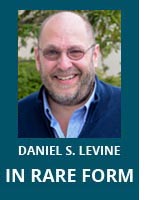
Cyndi Segroves and Ray Jordan were born ten years apart. Segroves was living in Tucson, Arizona, and Jordan more than 8,000 miles away in Melbourne, Australia, but they found each other and were married after just five dates.
If that sounds like a whirlwind romance, I should say these are two people who don’t take typical dates.
The husband and wife duo each have facioscapulohumeral muscular dystrophy (FSHD), a rare genetic condition that leads to the weakening of skeletal muscles. FSHD typically begins during the teen years with onset affect the loss of muscle strength in the face, shoulders, upper arms, legs, or core. It can spread to anywhere in the body. It can cause pain and fatigue with about 20 percent of people with the condition requiring a wheelchair by the age of 50, according to the FSHD Society.
Segroves, who today writes tax software, was diagnosed at 16. Jordan, who provides equipment to bowling alleys (the machinery and not the balls), didn’t learn he had the condition until he was 34.
Their romance began, according to Segroves, when Jordan was among a number of people within the FSHD community she had sent a friend request to on Facebook, which he accepted and then promptly began offering unsolicited critiques of articles she wrote. But it was an article she wrote about devotees—people with a fetish for people with disabilities—that seemed to pique his interest and they began a regular exchange.
Jordan travelled regularly to the United States for business. When he was heading to Las Vegas in July 2010 for a business conference, he invited Cyndi to join him for the weekend. She was a short plane ride away and decided to take him up on his invitation. That was date one.
A month later he returned to Las Vegas for an FSHD conference and that was date two.
They found that beyond their rare disease and their advocacy work, they had a lot in common, including similar values and political views.
“There are a lot of different things that we agree on,” said Segroves. “We disagree on pickles and tomatoes.” Segroves likes pickles and not tomatoes. For Jordan, it’s the reverse.
“We figured out that we liked each other a fair bit and we enjoyed spending time together,” said Jordan. He said the two of them talked daily over the Internet.
Their third date was a two-week get-together in Hawaii with a week-long cruise. Hawaii served as the closest thing to a halfway meeting between their two homes, as possible.
For their fourth date, Jordan flew to Texas to meet Segroves’ parents and they then went on to Las Vegas and Tucson.
And then the fifth date they had in Sydney and a train ride to Melbourne where Segroves met Jordan’s parents. After a New Year’s Eve in downtown Melbourne with crowds of celebrants, they made their way home at 4 a.m.
When they woke the next morning and talked in bed, the conversation made its way to marriage, and one of them suggested they should get married and the other agreed. They described it as a “50-50 proposal” five dates and two years after they began their courtship.
“There wasn’t any momentous, down-on-your-knee, because that’s actually physically impossible for each of us,” said Jordan. “And then a couple of days later, we went off to one of the local jewelry stores and purchased a ring.”
The couple owns homes in Tucson and Melbourne. Because of work demands each has, they spend months apart. Nevertheless, they still connect everyday over the Internet. The pandemic has mitigated that to some extent because it’s allowed Jordan to remain in Arizona during a time of the year he’d normally be in Melbourne.
Though their shared FSHD may have been responsible for their initial connection, they said it has little to do with their compatibility. Segroves’ disease progressed faster than Jordan’s, which allowed her to give him advice on features to look for in a wheelchair when it came time for him to get one, but for a couple that spent hours upon hours talking online, they say what makes their relationship work is communication. “I think we talk more when we’re not in the same house,” said Segroves.
“Our relationship was built on talk,” said Jordan. “I can’t know how many hundreds of hours we talked before we even met, getting to know each other, what’s in each other’s mind. We figured out that we are compatible before we actually met in person, which is not the way it normally happens.”

Stay Connected
Sign up for updates straight to your inbox.
